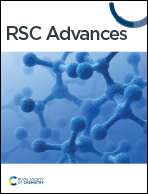Geographical heterogeneity and dominant polymer types in microplastic contamination of lentic ecosystems: implications for methodological standardization and future research†
Abstract
This study examines the prevalence and distribution of microplastic polymer types in lentic ecosystems, revealing significant heterogeneity across different geographical regions and ecosystems. The most dominant type of microplastic observed was polyethylene (PE), followed by polypropylene (PP) and polystyrene (PS), which aligns with global production rates. North America, Asia, and Europe were identified as the regions with the highest microplastic contamination, with the United States, China, Italy, and Spain being the most affected countries. The physical characteristics of each ecosystem, such as wind speed, depth, and eutrophication, alongside seasonal variations, and anthropogenic activities, contributed to the observed heterogeneity in microplastics concentrations. The study highlights the need for further research on microplastics in lentic ecosystems, considering their unique physical characteristics and anthropogenic influences. A significant lack of methodological standardization in microplastics research was identified, leading to underestimation of microplastics prevalence and high heterogeneity in meta-analyses.

- This article is part of the themed collection: 2023 Reviews in RSC Advances


 Please wait while we load your content...
Please wait while we load your content...